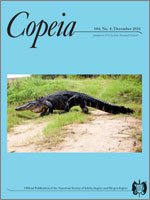The conditions experienced during early development may have strong effects on the adult phenotype, and consequently on fitness. Diet quality is an important environmental variable, and, frequently, organisms with low protein diets should achieve higher fitness on high protein ones. As for many omnivores, tadpoles find a greater quantity of protein in animal materials, thus it is often assumed that tadpoles would increase fitness on carnivorous diets. Using an omnivorous tadpole, Rhacophorus arboreus, we tested the effects of animal diets (chironomid larvae and tubificid worm) and plant diets (high protein alga, spinach, and leaf litter) on post-metamorphic fitness-related traits: body size, locomotory performance, and gut length. All tadpoles metamorphosed at the same size except those on the leaf litter diet that exhibited the longest larval period, the smallest size at metamorphosis, and the lowest locomotory performance. The algal treatment induced faster growth in the tadpoles and produced juveniles with proportionally shorter guts than the smaller juveniles from the litter treatment. As suggested in recent studies, differential post-metamorphic gut length may influence food intake, assimilation efficiency, and growth in metamorphs, but such an assumption needs further clarification. The tadpoles on carnivorous diets metamorphosed into frogs with relatively shorter legs and poor locomotory performance. In contrast to expectations, carnivorous diets impaired post-metamorphic performance in an omnivorous tadpole. The causes of leg abnormalities remain unclear, but the tadpoles possibly suffered from nutritional imbalance on carnivorous diets.
How to translate text using browser tools
7 November 2016
Post-metamorphic Costs of Carnivorous Diets in an Omnivorous Tadpole
Noelikanto Ramamonjisoa,
Noriko Iwai,
Yosihiro Natuhara
ACCESS THE FULL ARTICLE





